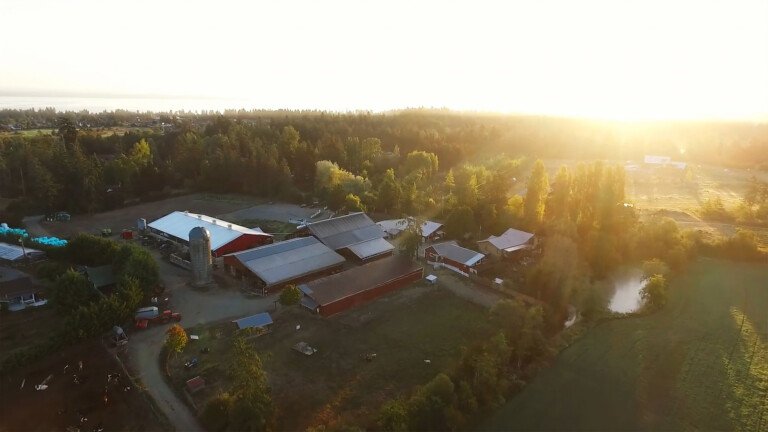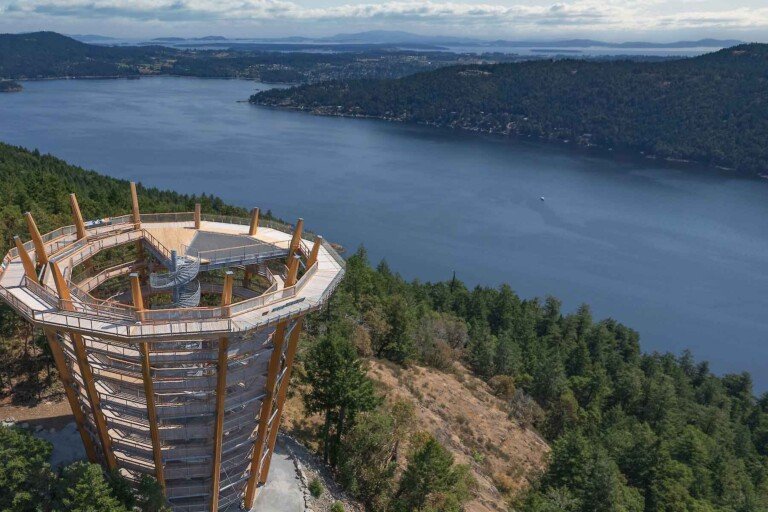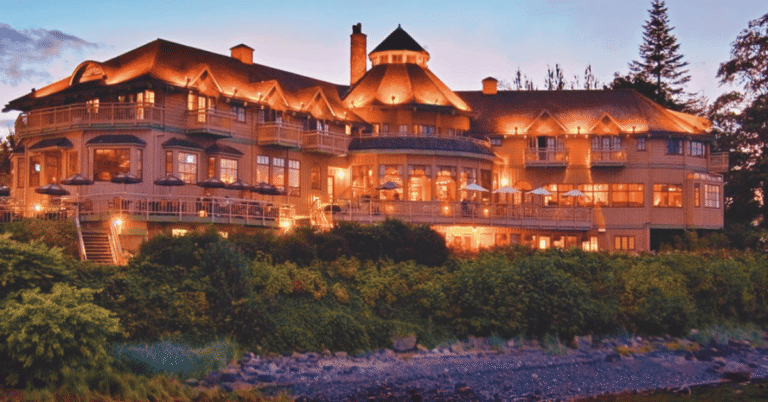The small villages of Manson Creek and Germansen Landing in the Omineca region north of Prince George have a history routed in mining (gold, silver and mercury). The still-active gold placer mining operations provide a fascinating insight into the history of remote Manson Creek and the surrounding area, reminiscent of early 19th-century British Columbia.
Manson Creek was a supply centre for the Omineca Gold Rush in the early 1870s, which attracted more than 1,000 prospectors to the region, and later became a trading post for the famed Hudson’s Bay Company.
The major project in the Fort St. James area throughout the 1930s consisted of connecting the Omineca mining operations to the rest of the world via Fort St. James. Gold operations were plentiful at Manson Creek, Slate Creek and Germansen River. When operating at full capacity, the Germansen operation employed 100 people. Some men walked the hundred-mile distance for jobs digging ditch lines, building flumes or building the dam on Germansen River to control waterflow to the mine.
The community was named after https://britishcolumbia.com/wp-content/uploads/2020/07/discovery-islands-lodge-1-accommodation-quadra-island-british-columbia-1.jpg Manson of the Hudson’s Bay Company, who administered the New Caledonia district from Fort St. James from 1844 to 1857. Manson joined the HBC in 1817, and served at Fort Simpson, Fort McLoughlin, the Thompson River Post (Kamloops) and at Fort Stikine before taking over command of New Caledonia from chief Factor Ogden.
Manson Creek today serves a growing tourism and guide outfitting industry. The Omineca region north of Prince George supports a rich biodiversity of fauna and flora, and the most remote network of backroads in BC, offering widespread access to working logging camps, mineral exploration sites, guide outfitters, and remote native towns.
Amenities in the community of Manson Creek include the Wolf Ridge General Store and accommodation cabins.
Population: 40
Location: Manson Creek is located in the northern interior of British Columbia, 140 miles (225 km) north of Fort St. James and 125 miles (200 km) northwest of Mackenzie and McLeod Lake.
Gold Panning: Various deposits of gold placer can be found in the Manson Creek and surrounding area, as well as jade, rhodonite, jasper, and agate. If you’re feeling lucky and adventurous, you can try gold panning in Manson Creek, or in Rainbow Creek to the south, between Manson Creek and Fort St. James.
Omineca Provincial Park protects 80 km of the Omineca River Valley and numerous mountain ranges, including the Wolverine Range, the mountains northwest of Germansen Landing and the alpine ridges at the head of Evans Creek and Germansen Lake. The park provides undeveloped hiking and walking trails, campsites and wilderness backcountry camping, and horseback riding is permitted.
Camping: Omineca Provincial Park provides rustic vehicle-accessible campsites, and wilderness backcountry camping is allowed. Self-equipped travellers will also find an unlimited number of gravel roads and other camping spots in the area to explore.
Hiking: The Baldy Mountain Trail, an established but unmarked trail near Williston Lake, runs 42 miles (67 km) from Sylvester Creek north to the old gold fields at Manson Creek, with a 2.5-mile (4-km) spur running up to the peak of Baldy Mountain. It’s part of a trail that used to run north from Vanderhoof (on Hwy 16 west of Prince George). It might take a bit of work to find either end, but once you’ve found it, it’s distinct and well maintained by local trapper Oscar Swede. Be prepared for some boggy creek crossings, especially through Sylvester Creek. The trailhead is located west of Williston Lake along a network of Forest Service roads.
The Omineca River offers some good fishing and grade 1 or 2 canoeing, even though the Sekani word “Omineca” means slow moving water. There are often a couple of logjams that may present minor challenges for canoeists and kayakers. The Omineca River site in Omineca Provincial Park provides rough access to the river, but the facilities are not suitable for trailer-type boat launching.
Williston Lake to the east of Manson Creek is the largest lake in British Columbia, covering an area of 166,000 hectares (410,000 acres). The huge man-made lake was created when the W.A.C. Bennett Dam was constructed on the Peace River. The lake is a popular boating and fishing destination in the area.
The W.A.C. Bennett Dam at the head of the Peace River Canyon is key to the multiple uses of Peace River water for power generation. Completed in 1967, it is one of the world’s largest earthfill structures, stretching 1.25 miles (2 km) across the head of the canyon and measuring 183 metres (600 feet) in height. The dam’s visitor centre near the town of Hudson’s Hope offers a wide range of exhibits and an audio-visual theatre. Free guided bus tours go 500 feet underground into the powerhouse.
Circle Tours: See the best of Northern BC on one of the Circle Tours that capture the wonders of the north. The Circle Tour of Northern British Columbia incorporates the Alaska Highway through the Rocky Mountain foothills to Watson Lake in the Yukon, linking with the Stewart/Cassiar Highway and Yellowhead Highway 16 in the south. The Inside Passage Circle Tour and the Native Heritage Circle Tour follow the same route, from Port Hardy on Vancouver Island north by ferry to Prince Rupert. Catch another ferry to the Queen Charlotte Islands, or venture east on the Yellowhead Highway to Prince George, and south through the peaceful Cariboo to Vancouver along the historic Cariboo Wagon Road.
Circle Tours in British Columbia.






